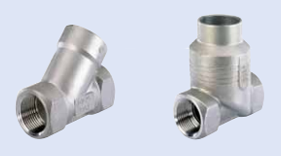

Process control covers a variety of disciplines and technologies. It could be mass flow, pressure, fluid flow, temperature or position. Principles of process control follow the same rules of measurement followed by adjustment of a process variable to maintain control of the process. The more accurate the control, the higher quality the end product and, more importantly, the higher the profitability.
Read on to find out more, as we explain the intricacies and benefits of process control.
Process control is an industrial process that leverages the ability to monitor and adjust levels to give a desired output. It is used to improve performance and maintain a level of consistency, economy and safety that could not be achieved by human manual control.
The main objective of process control is to control the physical parameters of temperature, pressure, flow rate and force. The physical parameters in a process control system are affected by internal and external disturbances. As a result, corrective action is constantly required to keep them at a consistent level.
There are 6 basic elements that make up a process control system. They are:
In order to create a fully working process control system in its most efficient capacity, there are six steps you should go through.
The first step to creating an efficient process control system is to monitor the system’s performance and take note of any signs of poor control or errors. This may include inconsistencies, variations in energy, or controls set to manual instead of automatic.
Once you have monitored the system performance and noted any inconsistencies or errors, now is the time to check actual components of the process control system. Any faulty equipment needs to be fixed immediately, and checks completed to ensure that all components have also been installed correctly.
Once repairs have been made on components, ensure that all controls are working properly and efficiently. Setting controls to automatic is a more efficient way of working. Once done, review controls to check they’re configured correctly.
Create a list of improvements that could be made in control. This includes thinking of ways to improve energy and efficiency in a low-cost non-time consuming manner. Put together a plan as to how you can go about improving controls in the process system.
Ensure that any new equipment or components are installed correctly, and anyone working directly with the system is trained fully. Set new targets for the system to monitor in the short and long term to establish if the new practices put in place are performing as expected.
Once everything is in place, it is time to monitor performance. Similar to the first step, mark out any components that require work and fix any issues that arise. The process control system should run efficiently now that previous issues have been ironed out.
Founded in 1988, we are specialists in pressure management and supply to a broad range of industries, and are now one of the UK’s most leading distributors for pressure control. Fluid Controls has a strong commitment to quality and we maintain a consistent approach to everything, from our telephone manner to our technical advice and the products we manufacture. For more information or guidance, contact us here at Fluid Controls on +44(0)118 970 2060 or email us at fluid@fluidcontrols.co.uk.